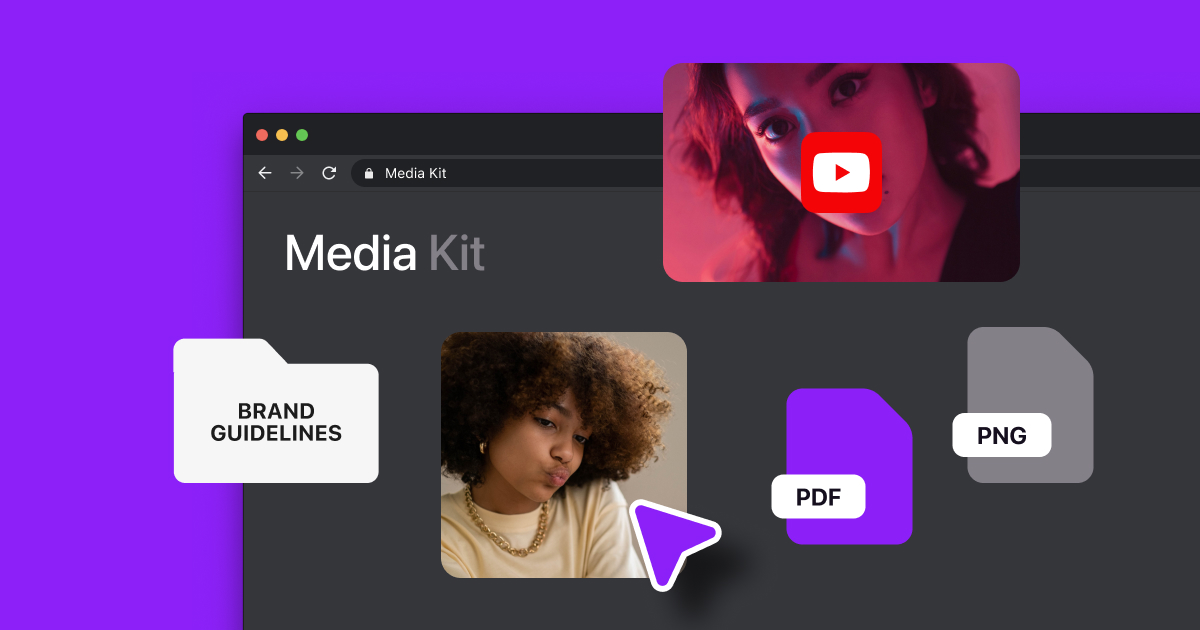How-to videos are in high demand among audiences for one simple reason: they show viewers exactly what to do.
These videos make it easy to learn new skills anytime and anywhere. A quick search on YouTube or TikTok yields results for many “how-to” topics, from product usage to DIYs.
You can use your knowledge to help people learn in-demand skills by filming how-to videos on almost anything, whether it’s starting a business, playing an instrument, photoshopping a picture — you name it. Creating useful, engaging how-to videos lets you teach your audience a new skill, which helps them think positively of you. That might expand your reach, thanks to shares, and strengthen your identity as a helpful creator.
What Are How-to Videos?
A how-to video (also called a tutorial, explainer, or instructional video) shows viewers how to do things by watching and following along.
These videos focus on educating and informing audiences by breaking down a skill into clear steps. This way, viewers can easily recreate what they see in the video. How-to videos teach people everything from basic tasks, like how to change a lightbulb, to complex skills, like how to learn Javascript.
Benefits of How-to Videos
While audiences benefit from the knowledge you’re sharing, there are several ways content creators also benefit from publishing easy how-to videos:
- Personal Brand Awareness — How-to videos show your expertise in a particular topic, which can make audiences trust you more and establish you as an expert who is a reliable source of information.
- Improved Reach and Engagement — How-to videos often attract viewers actively looking for practical knowledge and specific solutions to problems. If you provide those solutions, this can help you reach a broader audience. Some viewers might come to your profile for a one-off tutorial, like how to install a new appliance — but others could follow or subscribe to see your series of videos on how to apply different makeup products or use Excel shortcuts.
- Community Building — These videos can bring together like-minded individuals who share an interest in your niche, fostering an online community centered around your content. Consistently providing useful content about a topic can help you build a loyal group of followers who are more likely to engage with your content.
How-to Video Examples
While there are countless tutorials you could create, here are some how-to video ideas to inspire you:
- How to Use Skincare Products — Think of possible skincare problems your audience may have and help solve them. Show viewers how to apply serums to tame oily skin or prepare for a day in the sun with sunscreen. This lets you reach an audience interested in healthier skin and reinforces your personal brand as a self-care and beauty expert.
- How to Do a Pull-up — Put your fitness or personal training expertise to use and help viewers achieve their personal fitness goals. Demonstrate how to do a certain exercise, common workout mistakes, and other tips to help newbies feel more comfortable working out.
- How to Use Artificial Intelligence (AI) — If you’re an AI enthusiast or work in the field, videos on how to use AI can simplify the topic and make it more approachable for non-experts.
- How to Edit a Video — Share your video editing knowledge with audiences by showing them step-by-step how you polish content. Showcase techniques and software that you use to simplify the editing process to inspire viewers to make their own or to show followers how much care you put into your videos.
- How to Meditate — Establish yourself as an expert in wellness by creating videos instructing others how to meditate. Sharing meaningful content about mental health and wellness can help you build an online community of like-minded people.
How to Make a How-to Video: Step-By-Step
Follow this guide to make helpful, engaging videos that provide value to your audience.
1. Know Your Audience
Before making a how-to video, determine who you’re creating videos for. By understanding your audience, you can create tutorial videos that match your viewers’ needs.
Say you run a YouTube channel with videos on how to make various recipes. If you know that your audience consists of busy professionals looking for quick and healthy meal ideas, focus on creating YouTube videos that meet their specific needs, like easy, time-saving dinner dishes. Since most busy professionals are short on time, they’ll appreciate this content, increasing views, likes, and shares.
2. Create a Video Script
Organize your thoughts and write them down in a video script beforehand. Your script should include everything you’ll say in the video and any elements you’ll add to make your video more engaging.
Remember, a how-to video aims to explain things in a way that's easy for your viewers to understand — it won't be as effective if you're struggling to say the right words or are disorganized and jumping between steps.
A script helps you plan your message so that it makes sense to viewers. The result will be a clearer, more polished video with fewer mistakes, filler words, and awkward silences.
To draft scripts quickly and efficiently, use Captions AI scriptwriter to generate a tailored script. Here’s how:
- In Captions, click on “Create” and select “Script.”
- Select a template, such as short-form content, long-form content, an ad, or a sales pitch. If you’re unsure, select “Auto.”
- Enter a short description of what you'd like your video to be about, like how to bake a birthday cake.
- Add keywords, like birthday cake or cake recipe.
- Choose your preferred tone of voice — professional, casual, or funny.
- Choose your video length — short, medium, or long.
- Select your language.
- Tap “Generate script” and let the AI assistant work.
- Edit your script to personalize it.
3. Record Your Video
Set up your equipment in a quiet place without background distractions. Ensure that the location has good lighting, or use a ring light for low-light areas. For better audio, use an external microphone rather than the mic on your camera or smartphone.
Decide in advance when you'll be on camera talking and when you'll be using other clips, such as B-roll or screen sharing. Planning in advance allows you to structure your content in an organized way, and it can save you time during filming and editing while ensuring your video is interesting and cohesive. Add these notes to your script to remind yourself what the plan was for the video.
Depending on your video's topic, pick your recording style — talk to the camera or display your screen's content.
For example, in a “how to post on TikTok” video, you might show a screen recording of your smartphone as you post on TikTok to show viewers the steps you follow. Add a voiceover narration to explain each step and teach viewers what they came to learn.
4. Edit Your Video
In the editing phase, you can refine your content with the following steps:
- Arrange your video correctly, ensuring the message is clear and cohesive.
- Remove unnecessary footage, bloopers, or awkward pauses for a more polished video.
- Add B-roll, graphics, and audio snippets to enhance the quality and make your video more interesting.
The best way to edit is with an all-in-one video editing tool like Captions, which lets you record, edit, and add subtitles to your how-to videos. Let AI correct your eye contact and trim out background noise to save you time and produce high-quality results.
5. Publish Your How-to Video
Where you post your video depends on the topic and your audience — various platforms attract different demographics who prefer different types of content. Here are two of the most popular options:
- YouTube — Post a YouTube video if you want to reach a vast audience interested in in-depth how-to content. Thanks to YouTube’s long-form videos, you have plenty of time to explain every detail of a process, from changing the tube in a bike tire to refurbishing a piece of furniture.
- TikTok — For easy, quick how-to content, post short videos to TikTok. This works well for how to use a new feature in an app or a certain product but might not be appropriate for lengthy instructions on repairing appliances.
How-to Video Tips
Here are a few ways to make successful how-to videos.
1. Choose an Attention-Grabbing Title and Thumbnail
Make your title and thumbnail eye-catching to attract viewers. They should also be informative so that viewers can see at a glance what skill or process you’re teaching.
For example, instead of "How to Stain a Wooden Cabinet," try "How to Stain a Wooden Cabinet in 4 Steps + Product Recommendations." This motivates viewers to click on the video with the more descriptive title because it promises to be a thorough guide that provides all the necessary information.

2. Speak Naturally and Clearly
Speak as you would if you were speaking face-to-face.
Here are a few quick speaking tips:
- Practice your script beforehand. This will help you feel more confident and relaxed.
- Speak with pauses instead of filler words to sound more polished.
- Vary the rise and fall of your voice (also known as intonation). Talk with passion to engage viewers and avoid speaking in a boring monotone.
Maintain eye contact by looking at your camera lens to emphasize your most important points and engage your audience. If you don’t get it right the first time, don’t worry. You can use Captions to correct eye contact in one click.
3. Add Subtitles
Make videos more accessible to people scrolling with the sound off or those who are deaf or hard of hearing by adding captions. Even if you’re screen recording to create the video, you’ll want to make sure the subtitles are legible and not obscured by other graphics.
Use the Captions app to add subtitles to ensure viewers fully understand the content in your tutorial video. Subtitles provide a visual aid that reinforces the spoken information in your video. Since some viewers both hear and read the information, they’re more likely to grasp the ideas and understand your message.
Whether you’re adding captions to TikTok videos, YouTube, or Instagram Reels, those subtitles will give search engines more informat`ion about your content. This can improve your chances of appearing in search results for relevant how-to searches and expose your video to more potential viewers.

Improve Your Videos with Captions
Record and edit your how-to videos and tutorials with Captions, an all-in-one AI-powered video editing software. Use Captions to trim videos, add subtitles, and even adjust eye contact.
Streamline your video creation process and create high-quality videos to teach viewers something new and establish yourself as an expert to grow your following.









